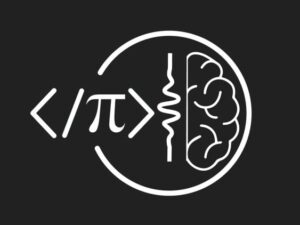Zero to Hero in Tableau: Data Visualization using Tableau
- Descrição
- Currículo
- FAQ
- Revisões
[April 2024 Update]
-
Added a section covering different ways of saving and sharing workbooks, data and views.
-
Added a lecture “Additional resources” which provides links to examples of great Tableau dashboards and practice exercises
-
Added more practice material and quizzes
If you are a data enthusiast looking to upskill in data visualization, you’ve come to the right place. Are you struggling with creating impactful visualizations or analyzing your data effectively? Do you want to be able to present your insights in a compelling and easy-to-understand way? Our “Zero to Hero in Tableau: Data Visualization using Tableau” course is designed to take you from a beginner to an expert in Tableau.
In this course, you will learn how to develop stunning dashboards, visualizations and insights that will allow you to explore, analyze and communicate your data effectively. You will master key Tableau concepts such as data blending, calculations, and mapping. By the end of the course, you will be able to create engaging visualizations that will enable you to make data-driven decisions confidently.
-
Develop stunning dashboards and visualizations that communicate your data effectively
-
Master key Tableau concepts such as data blending, calculations, and mapping
-
Analyze data and create compelling insights to drive data-driven decisions
-
Build interactive dashboards to share your insights and tell a story with your data
Data visualization is an essential skill for anyone who works with data, and Tableau is one of the most powerful tools in the industry. This course will help you to create data visualizations that are not only visually appealing but also impactful and actionable.
Throughout the course, you will complete practical exercises and projects that will give you hands-on experience using Tableau. You will learn how to use Tableau to solve real-world business problems and communicate insights to stakeholders.
With our expert instructors, who have extensive experience in using Tableau, you will be able to learn from the best in the industry. Join us today and take your data visualization skills to the next level.
-
1IntroductionVídeo Aula
"Master the art of data visualization with Tableau in this comprehensive course. Learn to create impactful charts and interactive dashboards, utilizing advanced features such as custom Geomaps, parameters, sets, and interactive actions. Ideal for business managers and aspiring analytics professionals, this course offers step-by-step guidance and practical exercises. No prerequisites required. Join now and enhance your data-driven decision-making skills!"
-
2Course resourcesTexto
-
3Why TableauVídeo Aula
"Discover the complex nature of data visualization and the need for powerful tools like Tableau. This video delves into practical scenarios where data is sourced from multiple file types, dynamic databases, and cloud services. Learn how Tableau connects to diverse data sources, collates and processes data, and empowers you to create customizable charts and interactive dashboards. Uncover the art of storytelling through multiple charts arranged in a cohesive dashboard. Collaborate, share, and embed visualizations with your team. Follow this structured process and gain confidence in mastering data visualization with Tableau."
-
4This is a milestone!Vídeo Aula
-
5Tableau ProductsVídeo Aula
"Explore the range of Tableau products and find the perfect fit for your data visualization needs. This video provides an overview of Tableau Desktop, Tableau Prep, Tableau Server, Tableau Online, and Tableau Public. Understand their functionalities, collaboration capabilities, and licensing options. Discover how Tableau empowers individuals, teams, and organizations to create, explore, and share interactive visualizations. Learn about free trial and student/teacher access to Tableau. Whether you choose Tableau Desktop or Tableau Public, this course offers a seamless learning experience to enhance your data visualization skills."
-
6QuizQuestionário
-
7Installing Tableau desktop and PublicVídeo Aula
In this video, “Learn how to install Tableau Desktop and sign up for Tableau Public in this instructional video. Follow the step-by-step process to download Tableau Desktop for a 14-day free trial or activate it with a product key. Explore the registration and installation procedures, enabling you to start creating visualizations in Tableau. Alternatively, discover how to sign up for Tableau Public and utilize its web-based platform for data visualization.
-
8About the dataVídeo Aula
"Discover the data used in this training and learn about the structure that Tableau accepts. Three comma-separated value (CSV) files—sales, customer, and product—are provided for analysis. The sales file contains transactional data, while the customer and product files serve as lookup tables. Understand the importance of maintaining a long table structure with variables in columns and transactions in rows. Avoid pre-processing data in external tools and explore data directly in Tableau for seamless analysis."
-
9Connecting to dataVídeo Aula
In this video, Learn how to import data from CSV files into Tableau. Connect to the desired data source by selecting the appropriate option from the connection panel. Drag and drop the chosen table onto the canvas. Understand the different elements in the data connection window, such as connections, data source properties, field names, metadata, and column options. Ensure the accuracy of metadata, including column names and data types, before proceeding with analysis.
-
10Live vs ExtractVídeo Aula
"Understand the differences between a live connection and a data extract in Tableau. With a live connection, Tableau queries the data source in real-time, providing up-to-date visualizations. In contrast, a data extract creates a snapshot of the data on the local system, enabling faster performance but requiring manual refreshes to update the extract. Consider the trade-offs between real-time updates and performance when selecting the appropriate connection type."
-
11QuizQuestionário
-
12Practice AssignmentTexto
-
13Relationships in TableauVídeo Aula
In this video, "Learn how to handle data from multiple tables in Tableau. Explore two common scenarios: joining tables to combine different types of data based on a matching key, and unioning tables to merge similar tables with the same structure. Understand the concepts of joining, blending, and relationships in Tableau, and anticipate future videos on how to implement these techniques in Tableau."
-
14Combining data from multiple tablesVídeo Aula
In this video, we learn how to establish relationships between tables in Tableau using the intuitive noodle connections. Discover the ease of creating relationships compared to traditional joins, blends, and unions. Understand the concept of cardinality and referential integrity when defining relationships. Explore multiple relationships between tables and how to arrange them on the canvas. Start leveraging relationships to combine data and create visualizations in Tableau.
-
15Joins in TableauVídeo Aula
In this video, we learn how to create traditional joins in Tableau by combining tables into a single joint table. Understand the difference between joins and relationships in Tableau and when to use each approach. Explore the physical layer and logical layer in Tableau and how they relate to the join process. Discover how to configure join types and matching keys to achieve the desired data integration. Gain insights into the advantages of relationships over joins for handling unclean data.
-
16Types of Joins in TableauVídeo Aula
In this video, we explore the various types of joins in Tableau and understand their differences. Learn about inner joins, left joins, right joins, and full outer joins, and how they affect the resulting data. Discover the use of Venn diagrams to visualize the relationships between tables in different join types. Gain insights into when to use each join type based on the desired data output. Select the appropriate join type for your analysis in Tableau."
-
17Union in TableauVídeo Aula
In this video, we learn how to use union in Tableau to merge similar data from multiple tables into a single table. Explore three different methods of creating a union: using the New Union option, dragging and dropping files onto an existing table, and converting tables to a union in the physical layer. Understand the concept of wild cards for merging multiple files and the resulting single table. Discover how unions combine tables into a unified dataset, enabling comprehensive analysis in Tableau.
-
18Physical Logical layer and Data modelsVídeo Aula
In this video, we explore the concepts of the physical and logical layers in Tableau and their role in data modeling. Learn that the physical layer enables joining and union operations to merge tables into a single table, while the logical layer allows for the creation of relationships between tables. Understand that joined and unioned tables appear as a single logical table, while related tables remain separate. See an example structure illustrating the differences between the physical and logical layers and apply the concepts to create a data model for visualization in Tableau."
-
19The visualization screen - SheetVídeo Aula
"Get an overview of the Tableau interface and the various options available for creating visualizations. Explore the menu bar, toolbar, data tab, analytics pane, and the canvas. Understand the distinction between dimensions and measures in the data tab and learn how to use the rows and columns options to structure the visualization. Discover the show me feature for selecting different chart types and learn how to manage sheets, dashboards, and stories. Gain an understanding of the powerful customization options available in Tableau for creating insightful visualizations.
-
20QuizQuestionário
-
21Practice AssignmentTexto
-
22Types of Data - Dimensions and MeasuresVídeo Aula
In this video, “Learn about the distinction between dimensions and measures in Tableau and their role in data analysis. Understand that dimensions are categorical columns used for creating categories or segments for aggregation, while measures are numeric columns that are aggregated to provide insights. Discover examples of aggregation based on dimensions and measures, and explore how the same column can act as a dimension or measure depending on the analysis scenario. Gain an understanding of how to set variables as dimensions or measures in Tableau for effective data visualization.”
-
23Types of Data - Discreet and ContinuousVídeo Aula
"Explore the distinction between discrete and continuous data in Tableau and their impact on visualizations. Discrete data consists of a finite set of values, while continuous data has an infinite range of values. Learn how selecting a variable as discrete or continuous affects how it is presented in visualizations, such as using headers for discrete variables and continuous axes for continuous variables. Discover how to change the dimensions and measures of variables, as well as convert between discrete and continuous types in Tableau for effective data visualization.”
-
24Changing Data type in TableauVídeo Aula
"Discover how to convert dimensions and measures in Tableau for effective data visualization. Learn how to change a column from a dimension to a measure or vice versa by using the dropdown menu in the data pane or directly in the rows and columns section. Understand the distinction between dimensions (categorical values) and measures (numeric values) and how to set their types as discrete or continuous to control how data is presented in visualizations.”
-
25QuizQuestionário
-
26Practice AssignmentTexto
-
27Bar chartsVídeo Aula
In this video, “Learn how to create bar charts in Tableau to visualize relative values between categories. Understand the difference between vertical bar charts (column charts) and horizontal bar charts and when to use each. Discover how to add dimensions and measures to the columns and rows, resize the chart, and sort the data based on a specific field. Also, explore how to rename the chart and sheet for easy identification and customization.”
-
28Line chartsVídeo Aula
In this video, “Learn how to create line charts in Tableau to visualize trends over time. Understand the process of placing time data in the columns and other parameters in the rows to create the line chart. Discover how to aggregate time data by year, quarter, or month, and explore different ways to visualize the trend within each year. Also, explore the option to add multiple measures to the line chart and the flexibility offered by Tableau in handling time-based data.”
-
29ScatterplotsVídeo Aula
In this video, “Learn how to create scatterplots in Tableau to identify relationships or correlations between numerical variables. Understand the process of placing the two numerical variables in rows and columns to create the scatterplot. Discover how scatterplots help visualize the range and distribution of data points and identify any linear or nonlinear relationships between the variables. Also, explore an alternative method using the Marks card to plot scatterplots for different subcategories of data.”
-
30Practice AssignmentTexto
-
31Marks cardsVídeo Aula
"Learn how to format and customize charts in Tableau using the Marks card. Explore options to change the type of marks, such as bars, lines, circles, squares, and more. Adjust the color, opacity, border, and halo of the marks. Control the size and thickness of the marks using sliders. Add labels to the marks and choose which marks to label. Configure tooltips to display custom information when hovering over marks. Discover additional mark options based on the chart type, such as path in line charts and shape in scatterplots."
-
32Dropping Dimensions and Measures on marks cardVídeo Aula
"Discover the versatility of the Marks card in Tableau for creating custom visualizations. Learn how to drag and drop dimensions and measures onto different Marks cards to change the appearance and behavior of charts. Explore options such as color, size, detail, path, and shape to modify the marks. Understand the effect of pressing the control key while dragging dimensions. See how labels can be added and customized to show percentages or other calculations. Unlock new chart types, like stacked bar charts, by leveraging the Marks card in your visualizations."
-
33Dropping Dimensions on Line chartVídeo Aula
In this video, “Learn how to leverage the Marks card in Tableau to enhance your line charts. Discover the impact of dragging and dropping dimensions into the color card, enabling you to compare multiple lines representing different categories. Explore the dual line chart functionality by adding multiple measures, such as sales and profit, and customizing their appearance using separate Marks cards. Unlock the potential for personalized tooltips and labels for each line, providing detailed insights into your data. Experiment with different configurations to create impactful visualizations.
-
34Practice AssignmentTexto
-
35Adding marks in scatterplotVídeo Aula
In this video, we discover the versatility of the Marks card in Tableau's scatterplots. Learn how dragging and dropping dimensions into the color card enables you to differentiate marks based on categories, while shapes allow for visual distinctions. Explore the addition of new dimensions, such as customer segments, to multiply the number of marks on the chart. Uncover the power of adding measures, like order counts, as the size of the marks, transforming your scatterplot into an informative bubble chart. Enhance your data visualization by leveraging the flexibility of the Marks card in scatterplots.
-
36Text tables, heat map and highlight tablesVídeo Aula
In this video, we learn how to effectively visualize numerical data in tabular format using Tableau. Discover three types of tables: text tables, heat maps, and highlight tables, each providing a unique representation of data. Explore the customization options available in the Marks card to configure the appearance of tables. Gain insights into cross-tabulations and the addition of dimensions and measures to enhance table visuals. Expand your data visualization capabilities by leveraging the power of tabular presentations in Tableau.
-
37Pie chartsVídeo Aula
In this video, “iscover how to create informative and visually appealing pie charts in Tableau. Learn to utilize dimensions and measures effectively to showcase the contribution of categories to a total or proportion to a whole. Understand the importance of labeling to enhance clarity in pie charts. Explore the customization options available in the Marks card, such as color and label configuration. Gain insights into comparing contributions across different dimensions for a comprehensive analysis. Create visually impactful pie charts in Tableau to effectively communicate data insights.
-
38Area chartsVídeo Aula
"Unlock the potential of area charts in Tableau and learn how to effectively visualize trends and contributions over time. Explore the difference between line charts and area charts and understand the stacking concept in area charts. Discover how to showcase the overall trend of a measure as well as the contribution of different categories using area charts. Learn customization options such as labels and percentage values to enhance clarity in area charts. Gain insights into real-world examples and unleash the power of area charts in your data visualization."
-
39Creating custom hierarchyVídeo Aula
In this video, “Discover the power of custom hierarchies in Tableau and learn how to define and utilize them effectively. Understand the concept of hierarchies and their benefits in visualizing data with multiple levels. Explore examples of hierarchies in customer and product data and learn how to create custom hierarchies in Tableau. Gain insights into using hierarchies in charts and accessing data at different levels within the hierarchy. Unlock the full potential of hierarchies in your data analysis and visualization workflows."
-
40Tree mapVídeo Aula
In this video, "discover the power of tree maps in Tableau and learn how to effectively present hierarchical data using this visualization technique. Explore the concept of tree maps and their use in visualizing data in the form of rectangles. Understand how hierarchies play a role in creating tree maps and how the size and color of rectangles represent specific measures or values. Unlock the potential of tree maps for hierarchical data presentation in Tableau."
-
41Dual combination chartsVídeo Aula
In this video, "Learn how to create impactful dual combination charts in Tableau to visualize and compare two measures using different mark types. Discover the versatility of dual combination charts in displaying data on primary and secondary axes, and explore the customization options for mark types. Understand the importance of label placement and axis synchronization to enhance clarity and enable accurate analysis. Unlock the full potential of dual combination charts for insightful data visualization in Tableau."
-
42Creating BinsVídeo Aula
In this video, "Discover how to effectively bin data in Tableau by converting continuous numeric measures into categorical groups or bins. Learn how to define bins based on desired ranges and create new dimensions to represent the grouped data. Explore the options for naming bins and adjusting bin size to accurately represent data distribution. Visualize the binned data using charts and leverage the new dimensions for insightful analysis in Tableau."
-
43HistogramVídeo Aula
In this video, "Discover how to create histograms in Tableau to effectively visualize the distribution of data. Learn how to automatically create bins based on a selected measure and visualize the number of data points within each bin using a bar chart. Explore the options to customize bin size and convert the histogram dimension between discrete and continuous. Gain insights into the shape of data distribution through histograms in Tableau."
-
44QuizQuestionário
-
45Practice AssignmentTexto
-
46Grouping DataVídeo Aula
In this video, "Learn how to group similar categories in Tableau to create custom categories and enhance data visualization. Discover two methods for creating groups: selecting and grouping specific marks, or manually grouping categories in a dimension. Use groups to analyze data for specific categories, highlight marks based on custom groups, or correct data errors by grouping similar data together. Explore the flexibility and versatility of grouping data in Tableau for enhanced data analysis and visualization."
-
47Filtering dataVídeo Aula
In this video, "Discover how to filter data in Tableau to show only relevant information and enhance data visualization. Learn three different methods of filtering: manually selecting and excluding marks, selecting categories on the axis, and using the filter shelf. Understand how to configure filters through the filter shelf, including options for dimensions, measures, and date-time filters. Explore the flexibility of Tableau's filtering capabilities to customize views and focus on specific data subsets."
-
48Dimension filtersVídeo Aula
In this video, "Learn how to configure dimension filters in Tableau to refine data visualization. Explore the four tabs in the dimension filter configuration window: General, Wildcard, Condition, and Top. Discover options such as selecting categories from a list, applying wildcard patterns to match category names, setting filtering conditions based on field values or formulas, and displaying top N categories. Understand the interactions between different tabs and how to effectively apply dimension filters to focus on specific data subsets in your visualization."
-
49Measure filtersVídeo Aula
In this video, "Discover how to configure measure filters in Tableau to refine data visualization based on specific measures. Learn how to select a measure and set the aggregation method. Explore options such as defining a range of values, specifying a lower boundary with 'At Least,' setting an upper boundary with 'At Most,' and selecting null or non-null values with the 'Spatial' option. Gain insights into applying measure filters to refine data representation and create focused visualizations."
-
50Date-Time filtersVídeo Aula
In this video, "Explore how to configure date filters in Tableau to refine data visualization based on specific date ranges. Learn about relative date filters for dynamic filtering relative to the current date. Discover options for selecting a range of dates, including setting lower and upper boundaries, starting and ending dates, and filtering null or non-null dates. Understand how date filters can function as both major filters and dimension filters, providing flexibility in data representation and analysis."
-
51Types of filters and order of operationVídeo Aula
In this video, "Learn about the different types of filters in Tableau and their order of execution. Explore dimension filters and measure filters, which can be easily created by dragging and dropping dimensions or measures into the filter shelf. Discover how to promote filters to context filters to control the order of execution. Understand the significance of data source filters and extract filters, which are applied at the data source level. Gain insights into the practical use cases and performance benefits of applying filters in the correct order.
-
52Customizing visual filtersVídeo Aula
In this video, "Discover the power of visual filters in Tableau and learn how to customize their appearance and functionality. Explore options such as editing the filter, removing it, and applying it to specific worksheets. Configure the format, font alignment, shading, and order of the filter. Customize the filter controls, including search buttons, include/exclude buttons, and the display of titles. Choose between displaying multiple values as a list, dropdown, or single value. Understand the significance of options like only relevant values, all values in hierarchy, include/exclude values, and hiding the filter card."
-
53Sorting optionsVídeo Aula
In this video, "Learn the various methods of sorting data in Tableau to organize your visualizations effectively. Discover how to sort data by metric values, alphabetical order, or specific field-level sorting. Explore sorting options from the toolbar, field labels, axis titles, and dimension headers. Master the concept of nested sorting and understand its impact on different chart configurations. Clear applied sorts when needed and gain control over data presentation in Tableau."
-
54QuizQuestionário
-
55Filter optionsVídeo Aula
In this video, "Discover the various filter options available in Tableau and how they can enhance data visualization and analysis. Learn about the Show Filter option, which adds a visual display of the filter for easy configuration. Explore the Clear Filter option to remove filters from the chart. Understand the significance of Add to Context and its impact on the order of filter execution. Learn how to apply filters to specific worksheets or across multiple related data sources. Gain insights into additional filter settings, including dimension attributes, aggregation methods, and removal options."
-
56Practice AssignmentTexto
-
57How to make a map chartVídeo Aula
In this video, "Discover how to create map charts in Tableau effortlessly using geographic data. Learn to pick and drop geographic fields to the detail card and explore the hierarchy options for drill-down capabilities. Customize the map chart by changing the mark type to highlight entire regions within boundaries. Use the color card to represent dimensions or measures, and explore additional customization options in subsequent videos to make your map charts even more impactful."
-
58Considerations before making a Map chartVídeo Aula
In this video, we explore before creating a map chart in Tableau, it's important to consider the availability of three components: the background map, geographic data, and geocoding/spatial information. Learn how to assign a geographic role to columns containing geographic data to enable Tableau to recognize and plot the data accurately. Explore the use of Tableau's built-in maps and the option to customize background maps and geocoding. These considerations lay the foundation for creating impactful map charts in Tableau.
-
59Marks card for customizing mapsVídeo Aula
In this video, “Discover how to select the appropriate Mark type, such as circle, square, or map, to represent your geographic data. Use the color card to highlight regions or add measures, and the label card to display data values and geographic names. Explore the size card to visualize data using varying circle sizes, and customize tooltips to provide relevant information. Enhance your map chart's visual appeal and data insights with these customization options."
-
60Customizing maps using map menuVídeo Aula
In this video, "Explore the various customization options available in the Map menu of Tableau. Learn how to select different background maps and themes, including custom map options. Discover how to add background images and import custom geocoding information for accurate plotting of geographic data. Use the Map Layers option to add additional layers, such as state borders or area code boundaries, to enhance the visual representation. Control the visibility of legends and toolbar options, and toggle map search, layer control, and map scale display. Customize your map chart to suit your visualization needs."
-
61Layers in a MapVídeo Aula
In this video, "Discover how to add and manage multiple map layers in Tableau to display different types of information on a single map. Learn how to add additional layers by dragging geographic data onto the map and customizing the marks for each layer. Control the visibility, order, and interactivity of layers using the layer control icon. Explore options to hide, rename, and remove layers, and configure user interaction with specific layer marks. Enhance your map chart by incorporating multiple layers of data for comprehensive visualization."
-
62Visual toolbar on a mapVídeo Aula
"Learn about Tableau's visual toolbar options for map interactions in this video. Discover how to search specific geographical locations, control map layers, zoom in and out, reset the map to its original position, and use selection tools to choose and filter map marks. Explore the rectangular and circular selection tools for selecting multiple marks and measuring distances between points. Enhance your map exploration and analysis by leveraging the features of Tableau's visual toolbar."
-
63Custom background imagesVídeo Aula
"Discover how to plot maps on custom background images in Tableau with this tutorial video. Learn how to use a custom image, such as a Google Maps snapshot, as the background for your map visualization. Follow the step-by-step process of creating a grid based on the image dimensions, assigning coordinates to data points, and adding the custom background image in Tableau. Explore how to plot and customize the points on the map to create a unique visual representation."
-
64Territories in mapsVídeo Aula
"Learn how to create territories in Tableau maps with this tutorial video. Discover two methods for grouping states to define territories based on specific criteria, such as sales data. Follow the step-by-step process of manually selecting states and grouping them, or using the create group option to aggregate states into territories. Explore how to color-code territories on the map and visualize aggregated data for each territory."
-
65Data blending for missing geocodingVídeo Aula
"Discover how to blend geocoding data in Tableau to plot custom map points in this tutorial video. Learn how to combine data from different sources when geocoding information is not available in Tableau's built-in geocoding database. Follow the step-by-step process of blending user data with latitude and longitude values from a separate data source. Understand how to assign geographic roles, create map charts, and ensure successful data blending for accurate map visualizations."
-
66QuizQuestionário
-
67Practice AssignmentTexto
-
68Calculated fields in TableauVídeo Aula
"Learn how to create calculated fields in Tableau for data analysis in this tutorial video. Explore the process of generating new fields based on existing data to perform calculations and gain valuable insights. Discover how to use mathematical operators and predefined functions to create calculated fields, such as currency conversion and date difference calculations. See examples of analyzing sales data and order processing times to showcase the power of calculated fields in Tableau."
-
69Functions in TableauVídeo Aula
“Dive into the world of Tableau functions with this informative video. Discover the different types of functions available in Tableau, including number, date, text, logical, and aggregate functions. Explore the extensive list of functions in Tableau's documentation and learn how to leverage them for complex calculations and analysis. Challenge yourself to implement a calculated field using the case function. Functions are a powerful tool in Tableau that can elevate your data analysis capabilities."
-
70Table calculations theoryVídeo Aula
"Learn the power of table calculations in this insightful video. Discover how table calculations allow you to perform calculations based on the data in your visualization, taking into account filters and displayed categories. Explore different types of calculations such as differences, percentages, and ranks, and understand how to specify the direction of the calculation. Witness the practical application of table calculations in Tableau and gain valuable insights from your data. Enhance your data analysis capabilities with table calculations."
-
71Table calculations in TableauVídeo Aula
"Discover the world of table calculations in Tableau with this insightful video tutorial. Learn how to apply table calculations to visualize data accurately and effectively. Explore various calculation types, including differences, percentages, ranks, and more. Understand the importance of defining the calculation type and direction to achieve desired results. Gain hands-on experience by implementing table calculations on a sample dataset. Enhance your data analysis skills and unlock valuable insights using table calculations in Tableau."
-
72Understanding LOD expressionsVídeo Aula
"Dive into the world of level of detail expressions in Tableau with this comprehensive video tutorial. Gain a deep understanding of the concept of level of detail and its impact on data granularity. Learn how to create level of detail expressions using keywords such as FIXED, INCLUDE, and EXCLUDE. Explore practical examples and see how level of detail expressions can be used to control the aggregation of data at different levels. Enhance your data analysis skills and unlock new insights with level of detail expressions in Tableau."
-
73LOD expressions examplesVídeo Aula
"Discover the power of level of detail expressions in Tableau with this in-depth tutorial. Learn how to leverage fixed, include, and exclude keywords to control data granularity and perform custom aggregations. Explore practical examples, such as highlighting sales from existing customers, calculating average purchase value per customer, and coloring bars based on overall sales. Take your visualizations to the next level by harnessing the flexibility of level of detail expressions in Tableau."
-
74Analytics paneVídeo Aula
In this video, "Dive into the Analytics Pane in Tableau and discover a range of powerful objects that can enhance your visualizations. Learn how to add reference lines, average lines, median lines with quartiles, and total values to your charts. Explore trend lines and forecast options for predictive analysis. Understand how these analytics objects provide valuable insights and make your visualizations more informative and effective."
-
75Practice AssignmentTexto
-
76Understanding sets in TableauVídeo Aula
"In this comprehensive lecture on sets in Tableau, learn how to define custom subsets of data based on specific conditions or calculations. Explore the power of sets in segmenting data and highlighting key elements. Discover how to compare the performance of elements within and outside sets. Dive into advanced analysis by combining sets through union, intersection, and except operations. Gain insights into repeat customers and other complex data relationships using sets in Tableau."
-
77Creating Sets in TableauVídeo Aula
"In this practical demonstration, learn how to create and utilize sets in Tableau to create custom subsets of data for comparative analysis. Explore two methods of creating sets - manual selection and specifying conditions - to define subsets based on specific criteria. Discover how to compare the performance of elements within a set against the rest of the data, combine sets to find intersections or unions, and gain valuable insights for advanced analysis. Take your Tableau skills to the next level with sets."
-
78ParametersVídeo Aula
"In this informative video tutorial, learn how to leverage parameters in Tableau to create interactive visualizations and empower users with control over their data analysis. Discover how to create parameters to allow users to set specific inputs, such as the number of states or the type of aggregation, and see the visualization update dynamically. Explore how parameters can be used in filters, calculated fields, reference lines, and more to enhance the flexibility and interactivity of your Tableau visualizations."
-
79QuizQuestionário
-
80Practice AssignmentTexto
-
81Dashboard part -1Vídeo Aula
"Discover how to build interactive dashboards in Tableau for a comprehensive view of your data analysis. This engaging video tutorial walks you through the process of creating a dashboard, including setting up the structure, adding visualizations, and customizing the layout. Learn how to incorporate brand elements, navigate between visualizations, and even enable users to download the dashboard. Unlock the power of Tableau's dashboarding capabilities to present data effectively and enhance decision-making."
-
82Dashboard part - 2Vídeo Aula
"Learn how to leverage the power of dashboard actions in Tableau to create interactive data exploration experiences. In this informative video tutorial, you'll discover how to implement filter actions to dynamically update visualizations based on user selections. Explore other action types, such as highlight actions for cross-visualization highlighting, URL actions to link to external web pages, and more. Unlock the full potential of Tableau's dashboard actions to enhance user engagement and facilitate in-depth data exploration."
-
83StoryVídeo Aula
"Discover how to create captivating stories using Tableau's Storyboards feature. In this tutorial, you'll learn how to effectively convey a narrative by presenting individual visualizations or dashboards in a step-by-step manner. Explore the intuitive process of adding charts, images, and text to each page of your story, highlighting key insights and observations. Elevate your data storytelling capabilities with Tableau's powerful Storyboards, providing a structured and engaging format for communicating your data-driven narratives."
-
84QuizQuestionário
-
85Practice AssignmentTexto












